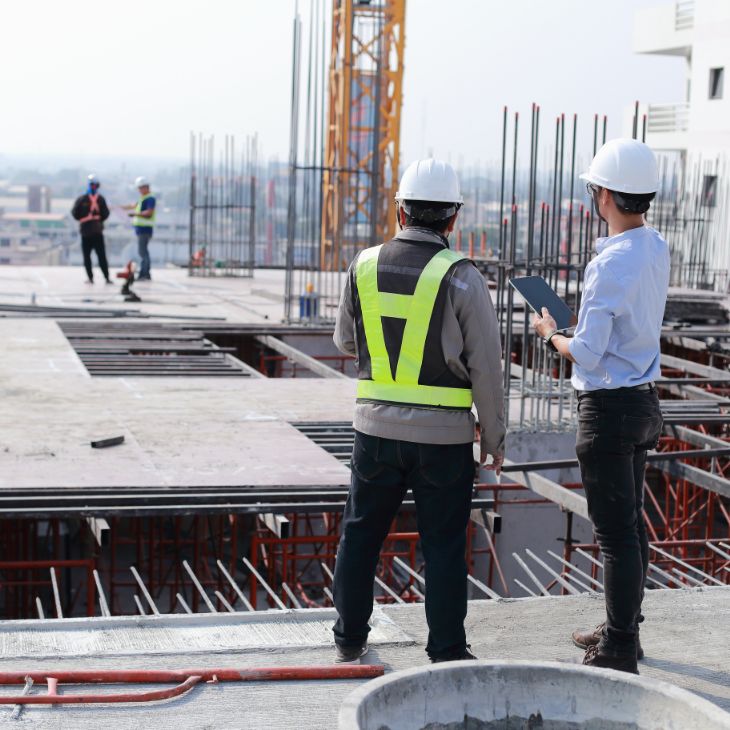
In the construction industry, safety is paramount, especially when it comes to material handling. This blog highlights how to create a secure and productive work environment. We’ll delve into the significance of material handling compliance and explore key strategies to maintain safety standards throughout the construction process.
From identifying hazards and risk assessment to utilizing appropriate equipment and fostering a culture of safety, join us as we prioritize the well-being of our workers and the success of a construction project and construction company.
Let’s make safety the cornerstone of every construction site and build a safer future together.
Also Read: Material Management Strategies For Large-Scale Construction Projects
Understanding Material Handling
Material handling refers to the process of moving, storing, and controlling construction materials throughout a project’s lifecycle. This includes the transportation of raw materials to the site, the movement of materials on-site, and the storage and distribution of finished products.
Adhering to proper material handling procedures is vital to minimize the risk of accidents, injuries, and property damage.
The Importance Of Material Handling Compliance
Ensuring material handling compliance is crucial for several reasons. It protects the health and safety of construction workers, reducing the risk of injuries and potential fatalities.
Moreover, compliance helps prevent damage to valuable construction materials and equipment, minimizing project delays and additional costs. Material handling is also a commitment that reflects a construction company’s dedication to professionalism, integrity, and the well-being of all stakeholders involved.
Identifying Hazards And Risk Assessment
One of the initial steps in ensuring material handling compliance is to identify potential hazards on the construction site. Conducting a comprehensive risk assessment helps construction teams recognize potential risks related to material handling, such as heavy lifting, improper storage, and inadequate handling of equipment.
Once identified, appropriate safety measures can be implemented to mitigate these risks effectively.
Proper Training And Certification
Construction workers involved in material handling should receive proper training and certification. Training programs should cover safe lifting techniques, proper use of handling equipment, and the importance of adhering to material handling protocols. These certifications ensure that workers possess the necessary skills and knowledge to handle materials safely and efficiently.
Utilizing Appropriate Handling Equipment
Using the right handling equipment is essential for safe material handling on construction sites. Depending on the nature and weight of the materials, a construction company should invest in equipment such as forklifts, cranes, and pallet jacks.
Regular maintenance and inspections of handling equipment are also crucial to ensure their safe and efficient operation.
Organized Storage And Access
Properly organizing and storing construction materials is vital for easy access and safe handling. Designate specific storage areas for different types of materials and keep them organized and labelled. Clear access paths and aisles to prevent tripping hazards and ensure the easy movement of materials.
Adequate Personal Protective Equipment (PPE)
Construction workers engaged in material management tasks should be equipped with appropriate personal protective equipment (PPE). Hard hats, steel-toed boots, gloves, and high-visibility vests are essential to protect workers from potential hazards and maintain a safe work environment.
Regular Safety Inspections
Regular safety inspections play a significant role in maintaining material handling compliance. Conducting routine inspections of handling equipment, storage areas, and work practices helps identify any deviations from safety protocols. Prompt corrective actions can then be taken to rectify potential safety issues before they escalate.
Communication And Collaboration
Effective communication among team members is crucial for material handling safety. Establish clear communication channels to ensure that workers can communicate effectively with each other, especially when moving or handling materials. Collaborative efforts and a strong safety culture contribute to a safer and more efficient construction site.
Emergency Response Plan
In addition to preventive measures, having a well-defined emergency response plan is essential for material handling compliance on construction sites. A construction company should establish clear protocols for handling emergencies related to material incidents, such as spills, collapses, or equipment malfunctions.
All workers should be familiar with the emergency response plan and participate in regular drills to ensure a swift and effective response in case of unforeseen events.
Continuous Improvement And Training
Safety is an ongoing process, and construction companies should continually seek opportunities for improvement. Regularly reviewing and updating material handling procedures based on lessons learned from incidents or near-miss situations can help enhance safety protocols.
Additionally, providing regular refresher training on material handling best practices ensures that workers stay informed about the latest safety guidelines and reinforces the importance of compliance.
About Taurus Projects
Taurus Projects is a reputable construction contractor known for its expertise in providing comprehensive material management solutions to construction companies. With a team of experienced professionals, we ensure that construction projects have the right materials at the right time, allowing clients to focus on their core construction activities and achieve successful project outcomes. To learn more about Taurus Projects and our services, contact us today.